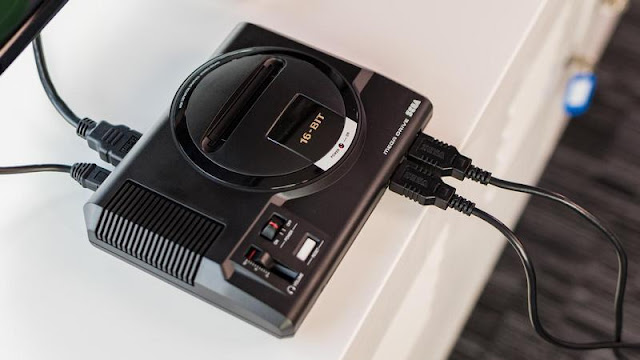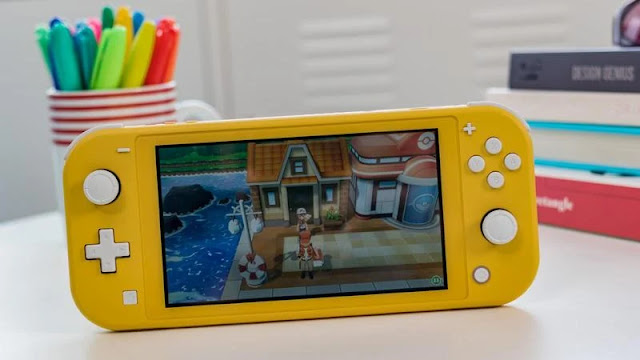The Switch OLED packs more improvements than the name suggests, with a better kickstand and quality of life fixes all over, but is it enough to upgrade?
Should I Buy The Nintendo Switch (OLED)?
Pros
- Bigger & better display
- Much-improved kickstand
- Refined design all-round
Cons
- No resolution or performance upgrades
- Joy-Con drift remains an issue
Our Verdict
- The Switch (OLED) is the best version of the console for those who are yet to buy one, but it's a trickier upgrade since there are no performance improvements.
- The OLED display is excellent, and it's joined by a new kickstand and small quality of life tweaks all over. That will be enough for some – especially original early adopters who effectively get a battery upgrade too – but most existing Switch owners are probably better off sticking with what they have.
Price When Reviewed
- $349.99
It’s difficult to assess the Nintendo Switch OLED for what it is without first addressing what it isn’t. This isn’t the long-rumoured Switch Pro – an upgrade that would bring with it enhanced processing power and 4K graphics.
While some fans (and journalists) cling to the hope that a 4K Switch is on the way, what we have instead is a more modest upgrade. The Switch OLED delivers (you guessed it) an OLED display, along with an improved kickstand, Ethernet support, and an array of small quality-of-life improvements.
It also costs just a little more than the standard Switch did at launch – though that has, in turn, dropped in price accordingly.
If you’re hoping for a radical upgrade to the Switch, this may disappoint, but taken on its own terms – with minor tweaks to match the minor price change – this is a clear success and certainly the best Switch model for most buyers right now.
Design and build
- Same basic shape and size - all existing accessories will work
- Greatly improved kickstand
- Smaller quality of life improvements all over
It may not be what Nintendo has hyped up the most about the Switch OLED, but the console’s build quality is actually where you’ll find the most radical changes from the original model.
The core design is roughly the same: a central unit dominated by a display, flanked by two detachable Joy-Con controllers that can also be used wirelessly.
Nintendo has kept the Switch OLED almost the exact same size as before – it's only 0.1in longer – and so it remains compatible with any existing controllers and other accessories. The controllers, in fact, haven’t changed at all (which also means issues like the infamous Joy-Con drift remain unfixed) though are available here in a nifty new white finish.
Although it’s the same size as before, the core Switch console has had plenty of important design changes. For one the display is larger – now 7in instead of 6.2in – achieved by shrinking the black bezel around the screen – that bezel itself is now made from a glossier plastic too.
The biggest change is to the kickstand, though. Infamously flimsy on the original Switch, it’s been redesigned from the ground up. Made of thicker, tougher plastic, it now stretches across the whole back of the console. It can also be set to any angle up to 140 degrees or so, giving you a huge amount of flexibility in how you prop the console up to play on the go.
Those are the big upgrades but Nintendo has made smaller tweaks throughout. The power button is a little bigger, the cover for the game card slot feels sturdier and the main body is built from a matt plastic that feels sturdier and more premium than before, though I have found it picks up micro-scratches quickly.
The sum of all these changes – especially in the slick white finish – is that the Switch OLED feels more like tech and less like a toy than either Switch model before it.
Display
- Bigger 7in display
- OLED tech means it's brighter and more vivid
- Still capped at 720p resolution
I’ve been skirting around the Switch OLED’s biggest new feature, but the name does rather give it away.
Fitting a larger screen into the same size body is obviously a welcome change, giving games more space to shine – even if it does emphasise the oddity that there’s still no Switch support for major streaming apps like Netflix or Disney+.
Size is far from the only improvement, though. The move to OLED means the panel here is brighter, with more vivid colours and deeper contrast. Playing Metroid Dread this week, it’s helped even the darkest areas of the sci-fi environment stay crisp and clear, while colourful details and lighting effects pop from the screen.
Side-by-side with an original Switch the difference is immediately apparent, but I think it’s fair to say that after a while using the OLED model you do stop noticing as much, as the improved quality becomes the new normal.
It doesn’t help that there’s no bump in resolution here, with the Switch OLED still only outputting in 720p on the handheld display. Regardless of the question of 4K TV output, it would have been really welcome to see a 1080p panel included on the console itself – without that, the OLED alone isn’t enough to justify an upgrade for most OG Switch owners.
Specs And Gameplay
- No improvements at all to the core specs - so no 4K
- Doubled base storage
- Ethernet port in the dock
Let’s be clear: the Switch OLED doesn’t include any CPU, GPU or RAM improvements over previous models. That’s why it’s still capped at 1080p output to TV screens, and it means that you shouldn’t expect any improvements in gameplay performance at all.
Again: Nintendo has never claimed otherwise, though doubtless there will be legion fans frustrated that the Switch hasn’t made any strides to keep up with the performance prowess of the recent PS5 and Xbox Series X.
Because it uses the standard Switch form factor – with detachable Joy-Cons – it can play every Switch game without compromise, unlike the more limited Switch Lite, which misses out on a few key titles, and isn’t as friendly to multiplayer.
One big change is the included storage – this is the first Switch to start with 64GB of built-in space, as opposed to 32GB.
That’s honestly still not a huge amount, but it is an improvement. In practical terms, it’s actually more than a doubling of available storage – once you factor in the 9GB or so that the system software takes up, the previous models shipped with 23GB of usable space while this offers 55GB.
Like other Switch models, the OLED model features a microSD card slot you can also store games on, and if you’re a heavy user you’ll need this anyway – in which case the extra base storage won’t make a huge difference. It is enough that lighter users – or those willing to uninstall games as they go – will finally be able to manage without extra SD storage though, which hardly felt possible on the first-gen hardware.
The final change is audio. Nintendo boasts that the Switch OLED features “enhanced audio”, though doesn’t go into any specifics. I’ll be honest, the difference isn’t huge, but I’m sure the company did tweak something or other. It will also connect to Bluetooth headphones finally, thanks to the same firmware update the company recently rolled out across the Switch lineup.
Battery Life
- Same battery as the improved 2019 model
- Bigger improvements for early adopters
- USB-C charging
Nintendo hasn’t made any grand claims about the Switch OLED’s battery life, which it estimates to be the same as the standard Switch at anywhere between 4.5 and 9 hours. That’s been my experience across a week of use, mostly playing Metroid Dread.
That mostly makes sense – the same battery cell is used here, and while it has to power a larger screen, that’s balanced out by the fact that the display is a more power-efficient OLED.
That’s a big point in favour of the upgrade here for early adopters, who’ll benefit from nearly double the battery life in addition to the better display and other small tweaks across the console. That won’t be true if you bought your Switch in the last year or two, however.
As for charging, once again it uses USB-C to top up. You can keep the Switch OLED charged in the dock, or recharge the battery using any USB-C PD-compatible charger – including most USB-C laptop chargers and some for phone chargers.
Price And Availability
The Switch OLED costs £309.99 in the UK, $349.99 in the US, and €364.99 in Europe.
By comparison, the original Switch is currently on sale for £259/US$299/€269, so there’s a decent price gap – especially in Europe. The portable-only Switch Lite is also still available for £199/US$199/€199.
For now, that leaves Nintendo with three clear pricing tiers, though it remains to be seen how long the regular Switch will stay on sale or whether it will be phased out by this OLED upgrade.
In any case, even this most expensive Switch remains comfortably cheaper than the PS5 and Xbox Series X – though there’s stiffer competition from Microsoft’s Xbox Series S, which is priced similarly to the standard Switch.
Verdict
Four years into the Switch’s life cycle, the OLED model is pitched as much as a replacement console for existing owners as it is a new entry point for Switch sceptics.
For those who haven’t given the console a go yet, this is clearly the best option for those that can afford it. The combination of a superior display and design refinements across the board make the Switch OLED an excellent option for new Switch owners, and in fact, I’d struggle to recommend anyone buy the default model over this unless the extra cost is an absolute dealbreaker.
For existing owners, it’s a little more complex. Those who bought their consoles before the 2019 refresh may find enough 'new' here to justify the cost, with enhanced battery life to go alongside the other improvements.
For anyone who bought their Switch more recently, the OLED alone probably isn’t worth dropping a few hundred on, and there’ll be a more personal calculation as to how much benefit you’ll get from other upgrades like an Ethernet port or the radically redesigned kickstand.
Specs
- Nvidia custom Tegra processor
- Nvidia GPU
- 64GB storage
- Micro-SD card slot
- 7in 720p OLED touchscreen
- USB-C port
- HDMI 1080p output
- Wi-Fi
- 4.5-9 hour battery life























0 comments:
Post a Comment